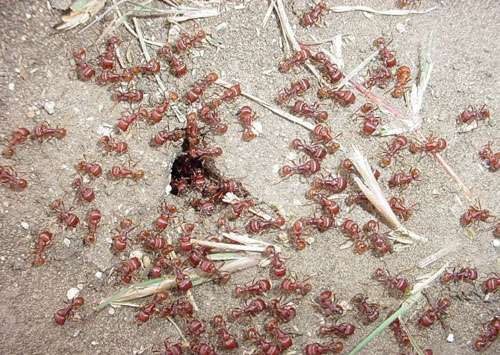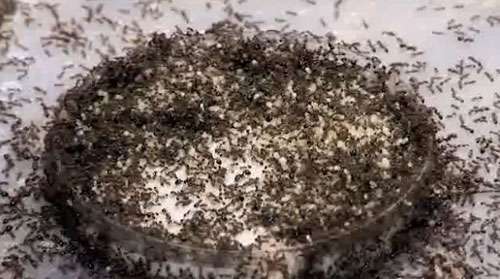Management, not eradication, could be the key to co-existing with fire ants

Invasive animals are often most abundant in habitats impacted by humans, especially man-made habitats, such as roadsides, suburban and urban developments, and areas of intensive agricultural activity. Understanding why this is true may reveal important insights about the ecological mechanisms that help determine the success and impact of many invasive species. The invasive fire ant, Solenopsis invicta, is a notoriously pesky species that benefits when humans disturb natural areas. With support from the National Science Foundation (NSF), Joshua King at the University of Central Florida and Walter Tschinkel at Florida State University have been exploring the underlying causes and consequences of the association of fire ants with human-altered ecosystems.
Fire ants are social insects and the reproductive phase of their life cycle is perpetuated by queens leaving their parent colonies, mating on the wing, landing in an area away from their parent colonies, and starting new colonies. By tracking the dispersal, founding success and persistence of fire ant queens and other native U.S. ant queens in a variety of natural and modified ecosystems in Florida, King's and Tschinkel's experiments have revealed that fire ant queens strongly prefer to start new colonies in the most disturbed habitats, such as roadsides. This particular feature of fire ant life history—disturbed habitat selection during dispersal—may be one of the primary characteristics that enables fire ants and other invasive ants to adapt to man-modified habitats. In contrast, native species show less fidelity to founding colonies in disturbed habitats.

These results will provide data necessary to craft predictive models of how fire ants spread, and may contribute to strategies for mitigating the negative effects of many invasive species.
Provided by National Science Foundation





















